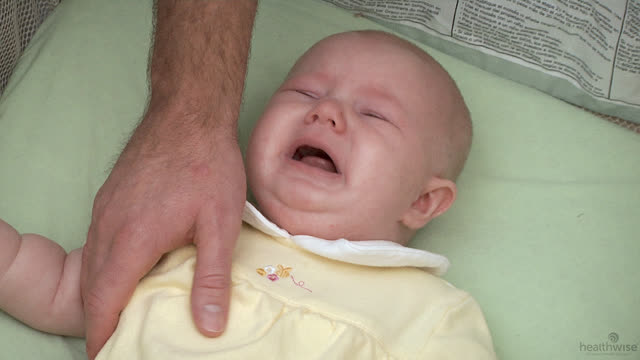Physical Growth in Newborns
Topic Overview
How can a baby’s physical growth be monitored?
In the first month, your doctor will pay close attention to your baby’s increasing weight, length, and head circumference, which is measured around the largest point of the head, usually starting at a point on the forehead.
What is a normal birth weight and length?
The average birth weight for babies is around 7.5 lb (3.5 kg), although between 5.5 lb (2.5 kg) and10 lb (4.5 kg) is considered normal. In general:
- Boys are usually a little heavier than girls.
- First babies are usually lighter than later siblings.
- Large parents generally have large babies, while small parents generally have small babies.
Newborns often lose around 8 oz (226.8 g) in the first 4 to 5 days after birth but regain it by about 10 to 12 days of age. In the first month, the typical newborn gains about 0.7 oz (20 g) a day, or about 4 oz (110 g) to8 oz (226.8 g) a week.
The average length of full-term babies at birth is 20 in. (50 cm), although the normal range is 18 in. (45.7 cm) to 22 in. (60 cm). In the first month, babies typically grow 1.5 in. (4 cm) to 2 in. (5 cm).
Your baby’s head will grow at its fastest rate during the first 4 months after birth than at any other time. This increase is due to rapid brain growth. The average head circumference at birth is about 13.5 in. (34.5 cm). By the end of the first month, it increases to about 15 in. (37.6 cm).
Is Your Baby’s Physical Development on Track?
Many babies look a little less than perfect in the first few days or weeks after birth. Gradually they will gain that cute and healthy baby look. Do not be alarmed if your newborn has:
- An irregularly shaped head, often referred to as the “cone-head.” This is most common with babies who are born vaginally (rather than by cesarean section). Bruising may also occur. Usually the head shape returns to normal in a few days to a week.
- Squinty-looking, bloodshot eyes. This is caused by swelling during labor and delivery. Also, antibiotic eye ointment given in the hospital can make your baby’s eyes look gooey or small. Your baby’s eyes will start to look larger and brighter within a couple of weeks.
- Downy hair on forehead, cheeks, shoulders, and back. This is especially common in babies who are born earlier than their due date. It will usually go away within a few weeks after birth.
- Swollen breasts or genitals. This occurs in both boys and girls when the mother’s hormones pass to the baby during birth. Some babies may even have some milky fluid come out of the nipple. Baby girls may have blood-tinged fluid from their vagina.
Other physical developmental issues to be aware of in your baby’s first month include:
- Hair loss. Your baby may lose some or all of the hair that he or she had at birth. This loss is temporary and new hair will replace it. Do not worry if your baby develops bald spots.
- Mild skin conditions. Many babies develop small pimples on the face. The pimples may show up during the first few weeks of life and usually clear up on their own within a few months. For more information, see the topic Newborn Rashes and Skin Conditions.
- Lack of ability to self-regulate temperature. Your baby is not yet able to adjust to heat or cold very efficiently. It is important to keep your baby bundled when it is cold and dressed lightly when it is very warm. Try to keep your home at a stable temperature.
Current as of: December 12, 2018
Author: Healthwise Staff
Medical Review:Susan C. Kim, MD – Pediatrics & Kathleen Romito, MD – Family Medicine & John Pope, MD, MPH – Pediatrics
This information does not replace the advice of a doctor. Healthwise, Incorporated, disclaims any warranty or liability for your use of this information. Your use of this information means that you agree to the Terms of Use. Learn how we develop our content.






